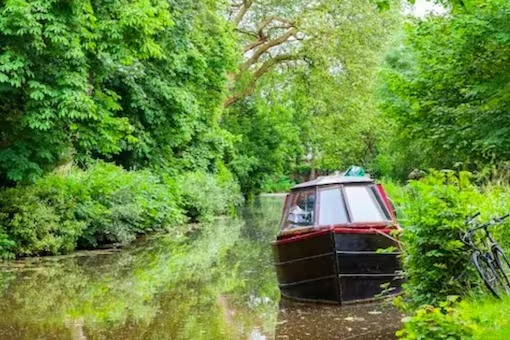When Europe Was Ruled by Horse-drawn Boats Before the Inventor of the Steam Engine
Boats had a strange way of moving across the waves when the lands were distant and broad. Indeed, certain pathways were designed just for them, and you would never believe it—animals assisted in transporting these boats without using any gasoline at all. Think about it! During that period, vehicles depended on the power of people or animals to move from one point to another, while diesel and gasoline were only concepts. You read correctly. In the past, animals like horses propelled ships forward. In the past, mules were chosen over horses to pull the boats because they were less expensive to buy and less prone to disease and accidents. This was common over a large portion of Europe.

Long before this strange sight, the hardworking people of England were working together to move vessels. The British started building unique highways along the sides of rivers and canals in the eighteenth century, specifically designed to accommodate animals that would pull boats. Thanks to the dependable horsepower, this clever technique made it easier to convey people, messages, and light objects in addition to freight.
Let’s go back to the Industrial Revolution. During the years 1770–1840, several canals were built in Britain, ushering in what is now referred to as the “golden age of canals.” These 4 thousand kilometers of mostly thin canals provided a scenic path for horses, mules, and donkeys pulling narrow boats. Long ropes were used to shackle the animals to the boats, and designated routes were made on the sides of the canal. Ingenious architects built bridges, meandering routes, and even tunnels along the canals to prevent boat traffic congestion.
After England passed the baton, the Netherlands refined this special water transportation technique. Relics from this period may still be seen today, as boats are used for tourists to slowly glide over Dutch waterways, providing a nostalgic look into the past.
Like many stories of development, this unusual form of transportation came to an end. With their strong engines that could move bigger loads further, railroads came to age in the 19th century. The appeal of railroads attracted investors, who quickly redirected their capital. What was the outcome? With a beautiful bow, the horse-drawn boats disappeared from view, leaving a strange network of bridges and roadways that continue to tell their amazing tale to this day.
Horse-drawn boats are becoming an endangered species on British waterways. The majority serve as pleasure boats, providing visitors with quick trips.







